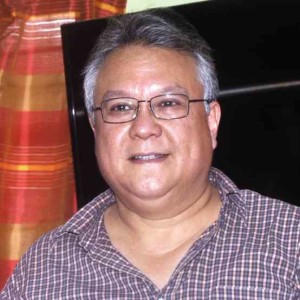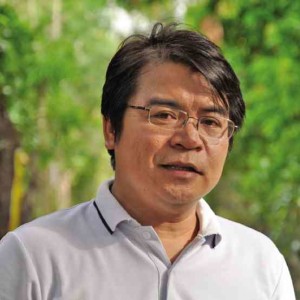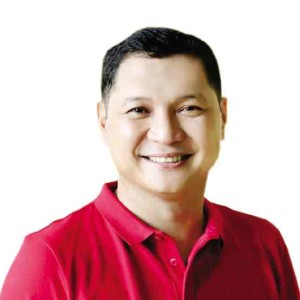Election 2016: Agenda of the Pangasinan governor

Profile: Pangasinan province
PANGASINAN is the largest province in the Ilocos region. It is the country’s leading producer of “bangus” (milkfish), mangoes, salt, among other things.
One of the earliest political units in the country, Pangasinan was conquered and colonized by D. Martin de Goiti in 1571. On April 5,1572, it was made an “encomienda” by the Spanish royal crown. Eight years later, in 1580, it was organized into a political unit under an “alcalde mayor” as head of the province. Its territorial jurisdiction then included Zambales province and parts of La Union and Tarlac provinces.
Pangasinan derived its name from the word “panag asinan,” which means “where salt is made,” owing to its rich and fine salt beds, the main sources of livelihood of residents in the coastal towns.
Total land area: 536,818 hectares
Article continues after this advertisementVoting Population: 1,705,260 (2016)
Article continues after this advertisementTotal Population: 2,779,862 (as of 2010)
Annual Per Capita Poverty Threshold: P17,949 (as of 2012)
Number of towns: 44
Number of cities: 4
Income Classification: First Class
Peace and order
CRIME NUMBERS UP. Pangasinan had 7,021 crimes recorded in the second quarter of 2015, the highest in the Ilocos region, according to the Philippine Statistical Authority. But this may also be because the province is the most populous in the region. In terms of crime solution efficiency, it posted 57.7 percent in the same period, the third lowest among the four provinces in the region (Ilocos Norte, 46.1 percent, Ilocos Sur, 58.3, and La Union, 78.4). Also, despite the arrest of illegal drug pushers and users almost every day in the towns and cities of the province, the illegal drugs problem remains a reality.
MARK COJUANGCO, Nationalist People’s Coalition

The demand for it must weaken. This can only happen through human interesting endeavors. I think that vocational skills training and the promotion of hobbies are the key to this.
Largely a police matter, crime rates can be lowered with the creation of livelihood, higher paying jobs and more intensive economic activity.
AMADO ESPINO III, (Aksyon Demokratiko)
The provincial government should further strengthen people involvement in curbing drug addiction and the incidence of theft and robbery at the barangay level.
Intensify job generation and employment services to alleviate poverty.
Strengthen information drive to deny demand for illegal drugs in the community.
Enhance program on youth development through sports and intensify value formation programs on campuses.
Lobby for the appointment of a permanent provincial police director for Pangasinan.
In partnership with the local police, local governments will install and operate an automated and unified security platform that will connect CCTVs installed in strategic areas to a centralized operation center. (But this requires all cities and towns to pass an ordinance requiring CCTV installation).
TEOZALDY SALVADOR, (Independent)
What is happening now is that solving crimes has been solely a police concern.
Participate directly in the planning and coming out with strategies to solve crimes. We have to go to the root [of criminality]… [but criminality] has been treated as a minor problem.
Agriculture
WHERE IS THE WATER? Pangasinan is the country’s third biggest rice producer, next only to Nueva Ecija and Isabela provinces. This is because only 48 percent of its rice fields are irrigated, preventing farmers from planting rice year round. The national government has allocated P2.4 billion to complete the irrigation component of the San Roque Dam. When the project is completed, however, irrigation water will reach only 10 eastern Pangasinan towns. Because of the El Niño phenomenon, farmers elsewhere in the province have complained of drying water impounding ponds, communal irrigation systems and deeper aquifers. What are your plans to address these concerns?
MARK COJUANGCO, Nationalist People’s Coalition
I believe in industrial-scale postharvest infrastructure to maximize farmer income. Enough of the “mickey mouse” facilities that don’t last, only benefit the few and are not bankable.
The farmer must sell palay as packaged rice, rather than palay. And corn as feed, poultry, or swine. He must have access to timely transportation for his product to reach the central bodega (I see it as an “Agri Lugan Program”).
It is time to use data acquired through Lidar (Light Detection and Ranging), a remote sensing method for mapping the planet, to maximize water catchment areas for central and west Pangasinan. There are still untapped resource potentials in the province’s waterways.
Let us move away from planting rice only during summer to maximize the San Roque Dam water resource. Let us use modern facilities such as traveling irrigators and surface irrigation systems as demonstrated in the farming town of Laoac, to maximize the resource.
AMADO ESPINO III, Aksyon Demokratiko
Provide farm-input assistance through subsidized scheme, especially provision of high quality palay seeds and fertilizers.
Strengthen cooperation among farmers’ organizations for them to gain easier access to credit assistance being provided by the provincial government and other lending institutions. We will also expand the credit surety fund for farmers.
Intensify technical training among farmer groups for them to gain knowledge on cost-reducing farming technology and adoption of organic farming.
Provide community-based postharvest facilities to reduce postharvest losses.
Continue to provide assistance in the rehabilitation of communal irrigation systems and installation of shallow tube wells.
TEOZALDY SALVADOR, Independent
Building a dam in central Pangasinan that can serve the whole province and tapping the Agno River which goes around Pangasinan. Looking at the demographics and topography of Pangasinan, the province has natural water sources for farm irrigation, including the San Roque Dam that serves eastern Pangasinan towns as well as parts of Nueva Ecija and Tarlac.
Health
TRASH TALK. Fifteen years after Republic Act No. 9003 took effect, Pangasinan still struggles to solve its garbage woes. According to the National Solid Waste Management Commission, 12 towns, including the capital Lingayen and Dagupan City, still maintain decades-old open dumps while 26 others have controlled waste disposal facilities. Only four towns and Urdaneta City have sanitary landfills.
MARK COJUANGCO, Nationalist People’s Coalition
Recycling has its place. But it is inadequate to handle the issue [of garbage]. To that end, we need a sanitary landfill, which—if possibly allowed by law—will be augmented with a modern high temperature incinerator to fuel an energy system.
There are natural formations in Pangasinan which make ideal natural “landfill” areas. These are characterized by low catchment area so these have minimum water flows, as well as leaching, during the rainy season. These areas are remote and away from communities and are large enough to last for at least a century.
We need to face the fact that municipalities do not and will not have the financial wherewithal to meet the infrastructure challenge of the garbage issue. The solutions therefore demand larger scope and cooperation. A landfill should be ideally large to serve a province or beyond one province, with proper cooperation.
AMADO ESPINO III, Aksyon Demokratiko
Strict implementation of waste segregation down to household level. Implement 3Rs (Reduce, reuse and recycle) to lessen residual waste.
Forge stronger ties and seek support from House of Representatives / national officials to provide funds for the construction of sanitary landfills in identified areas after proper clustering of cities and municipalities or seek public-private partnerships which can provide funds for the construction of sanitary landfills and waste-to-energy projects.
TEOZALDY SALVADOR, Independent

Promote waste segregation. Educate the people on proper garbage disposal.
Utilize these wastes and convert these into energy. Maybe if we have landfills in every district of the province, then I think we will address the problem. Interviews by Gabriel Cardinoza and Yolanda Sotelo
